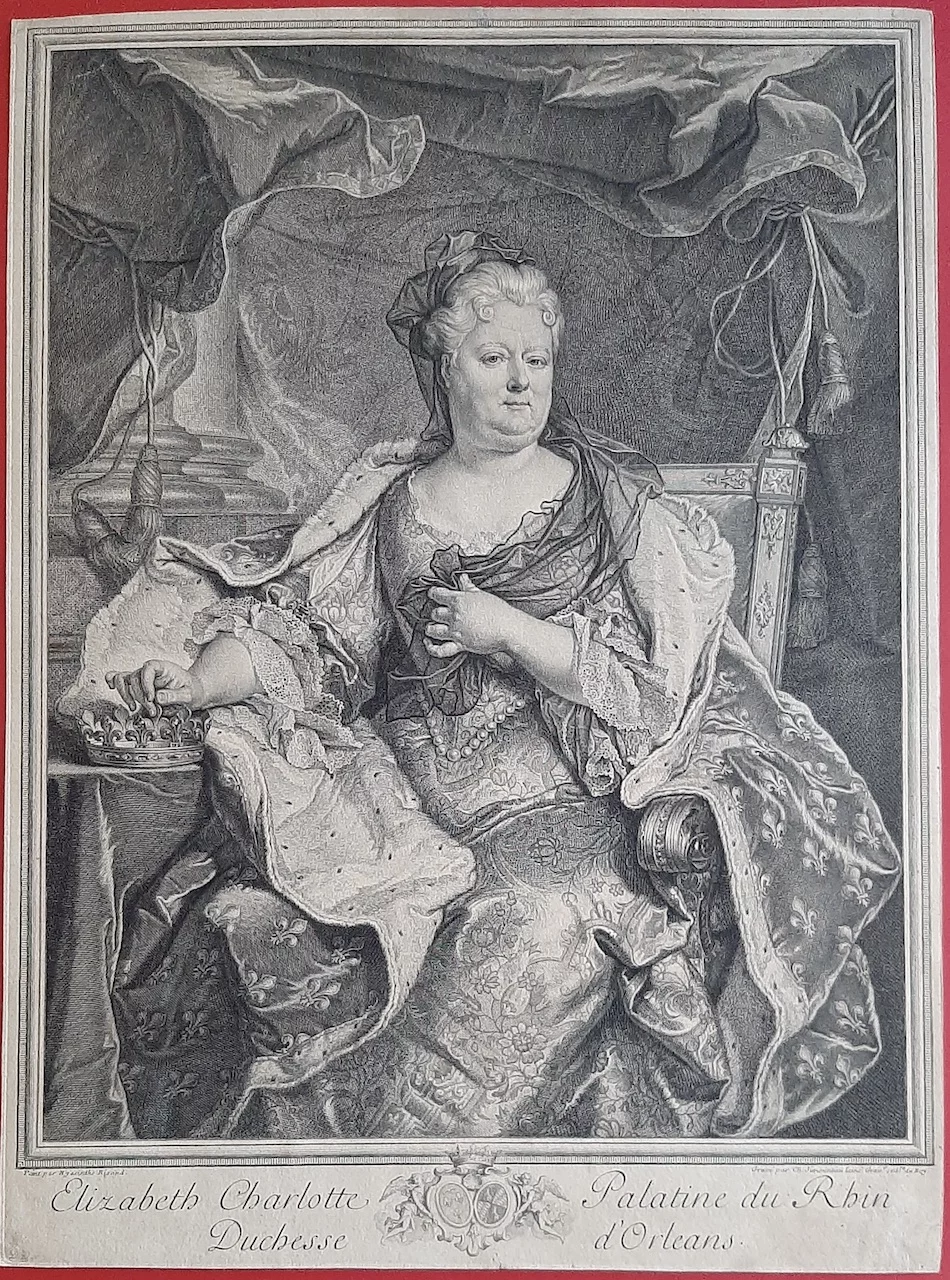Description
Charles Simonneau (1645-1728)
Elisabeth Charlotte Palatine of the Rhine, Duchess of Orleans.
Charles Simonneau The Palatine – Etching and Burin, circa 1718
Nice proof on laid paper, engraving by Simonneau after an oil painting by Hyacinthe Rigaud (1659-1743) made in 1713.
Dimensions : H. 470 mm x W. 347 mm.
Condition : traces of mounting on the back, two very small worm holes towards the bottom of the letter.
Charles Simonneau La Palatine – Elisabeth-Charlotte of Bavaria, nicknamed “Liselotte” by her family but also “La Palatine” by her detractors, was a German princess raised in the reformed religion. She was married by proxy on November 16, 1671 to Monsieur, the brother of King Louis XIV, Duke Philippe d’Orléans. She was converted by obligation to Catholicism, and she settled at the Court and became an attentive observer.
At the age of nineteen, the young German woman, jealous of her freedom, became “Madame, sister-in-law of the king”, the most important French princess after the queen.
With an appreciation for nature, Montaigne, Rabelais and freedom, she never felt very comfortable at the court of Versailles. This court was governed by a strict etiquette, where intrigues of all kinds flourished, and where human relations were based only on interest and selfishness. Concerned about the dignity of her rank, this princess surrounded herself with a circle of trusted people for whom she felt a true friendship and who provided King Louis XIV, despite herself, with some of his mistresses, such as Mademoiselle de Ludres.
She left at her death, in 1722, some 90 000 letters. The customs of the courtiers, the great events of the year, anecdotes, she depicted the daily life of the castle according to her moods. Mother of the future regent, the Palatine spared in her writings Louis XIV, whom she admired.
Her writings are particularly known for her hatred of Madame de Maintenon, whom she called “the king’s scum”, and for her admiration for Louis XIV.
From her office in the Palais-Royal, from her castle in Saint-Cloud or from Versailles, she fiercely depicts, true to her strong character, the protagonists of the Castle. Her letters, which were very closely watched by Monsieur de Torcy, the superintendent of the post office, spread throughout Europe a rather disreputable image of the King’s Court.
In 1674 and 1676, despite her husband’s taste for men, she gave birth to three children, including Philippe d’Orléans, the future regent of the kingdom during the minority of Louis XV. Her correspondence in German and French, of which a small part is preserved, is considered one of the best chronicles of the Grand Siècle. She died in Saint-Cloud in December 1722.


Reviews
There are no reviews yet.